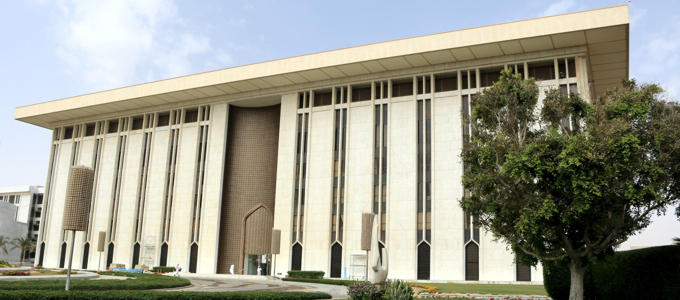Public-Private Partnerships or PPPs are generally long-term contracts entered into by a public sector entity with a private sector entity for the furnishing of public services or goods as specified by the articles of association and memorandum of association of the PPP. PPPs are generally financed by private entities and in return, they are allowed to levy charges and collect revenue from the public service/utility thus provided. PPPs are mostly used for infrastructure projects and lead to the creation of Special Purpose Vehicles (SPVs) that are created solely to fulfill the conditions of the letter of the award that is awarded to the winner of the public bid for PPPs.
PPPs are renowned for their low-risk factor, low-interest rates as well as tax concessions as it is the government that is contracting private parties to provide a public service on its behalf and as such PPPs. PPPs allow for the creation and completion of large-scale government projects with the help of private funding and the incentive of generating a return on interest through commercial activities or levy of charges on the infrastructure thus created which is paid by the users of the public service/utility. Some major examples are toll booths on highways and bridges, airports, seaports manufacturing units, power generating, etc.
Innovative Platforms for Delivery of Public Services
With the advent of internet technology and the widespread acceptance of digital services, the corporate world has understood the importance of connecting to users through platform-based ecosystems and providing services in the comfort of their homes. Gone are the days when people had to physically reach out to a brick-and-mortar establishment to avail of a service. Platforms like Amazon, Netflix, Prime Video, etc have changed the perception of the general public on user experience and how users view and avail themselves of these services.
Governments around the world have been using digital technology to transform their internal structures, functionalities, and operations. Extraordinarily little has been done to ensure user experience or engagement on government portals and websites. But the tides are changing, and governments have realized the importance of platforms and related ecosystems to provide public services and utilities much like corporate entities. Although the intention behind the utilization of platforms may differ for the public and private sectors, with private players more focused on increasing user engagement and enhancing user experience and public sector entities ensuring ease of usage and accessibility of public services, the pathway for achieving these goals have been the same. Usage of smart service delivery platforms and their integrated ecosystems are predesigned to ensure that everything the user needs is available on the platform they are currently visiting.
Government as a platform (GaaP for short) is a new concept, one that looks deep into what a citizen requires from their government. People are not willing to stand in long queues and keep circling within the bureaucratic hierarchy to get their work done, for time has become an unbelievably valuable asset, instead, they want a single window that can get their work done.
Open data platforms are already providing the general public with the datasets, documents, services, and tools provided by government ministries and departments. On the other hand, platform-based business models enable value creation by emphasizing interactions between service providers, producers, and consumers. A platform with its own ecosystem allows users to employ and use services that are interdependent but subservient to each other.
Digital platforms enable innovation, value creation, user engagement, and involvement, and have acted as intermediaries between users as well as users and producers/service providers. Data ecosystem platforms have transformed how both public and private entities communicate with their user base. Public sector platforms are further increasing government transparency as governments are publishing data and reports for citizen feedback, critique and reporting.
Using data ecosystem platforms as such has allowed governments to increase their reach, improve accessibility for users, increase transparency and fulfill their mandate of providing public services to their citizens while improving user engagement and saving time.
How to Build a Platform Ecosystem for Public Services
To build a functional and engaging platform ecosystem for providing public services the public sector must learn from its private sector counterparts. The PPPs can be a huge enabler by allowing governments to partner up private entities with the required expertise and experience in building such platform ecosystems for providing public services. Much like PPP infrastructure projects, the private entities will bring innovation and expertise to the project while the government provides them with incentives and lucrative financing to ensure efficient and optimized performance in providing public services. A digital platform that allows citizens to avail public services, maintained by a private entity which then charges the users of those services to get a return on its investment is the future of both, digital platform-based public services and PPPs.
Operating an open platform gives stimulus to innovation and governments can insist on open APIs which will allow for greater cooperation and third-party integrations. Another way in which government can promote PPP-based public services is that the platform thus created is a fundamentally simple system that can be then evolved by the community and citizens in coordination with the platform owner. An open platform will allow people to work on modules like advanced search, automated analysis, data visualization and even comparing data from different databases. These platforms then must be open to participation beyond the basic “comment” feature. For GAAP to work, the citizens must be able to get most of their work done with the help of supporting infrastructure and programs that are available on these platforms and provides all its data for public use.
Governments must also not shy away from acknowledging the loopholes in the system and constantly work on fixing security issues. Public data can be used to create several different applications and these applications can be controlled by simply legitimizing them instead of outright banning them. Data mining can also help in that regard as platforms can collect user data and use it to improve user participation and service delivery.
Digital platforms originated to take full advantage of the potential of the world wide web and the internet and as such these platforms have become an integral part of the internet experience for users around the world and more and more users are joining these platforms every day. Similarly, a government service platform will allow more and more people to engage with their governments, increase transparency, promote e-governance and engage more and more people in policymaking.
Major Examples around the world
The United Kingdom was the first country in the world to use GAAP to deliver public services. The Government Digital Service was instituted in 2011 to make digital services easy to use and effectively making all government services digital. The culmination of it all was gov. uk which became the one-stop portal for citizens to avail all government services. It allows publishing of data, and transparency and participation as its driving principles. It measures the performance of services through in-built performance dashboards and allows people to identify problems with services and improve upon them. It also provides an organized dataset for public usage and even offers a free and secure online payment service through gov. uk pay.
There is also a web hosting service for government services in the form of Platform as a Service (PaaS). The result is that government departments that offer more than 200 government services use this platform with many choosing the GAAP as their preferred mode for providing services.
Estonia is another successful example of GAAP as it delivers 99% of its government services and has saved an estimated 800 years of work time for the government, agencies, and its citizens combined. Government departments in Estonia can connect through the X-Road system which then makes it simple for any private entity applying for a license or develop an application. This private entities; can then join the X-Road and gain access to all related support, authorization, and registry services they need.
India has also seen huge advances in using GAAP and offering online services to its citizens. From UIDAI to e-KYC, to UPI, to NIC, the government has successfully integrated its services to both GAAP and PaaS infrastructures. The GSTN has created a shared and uniform tax-paying platform for both taxpayers and the government to simplify taxation in the country. The Government also provides Open Government Data, an open government platform to give the public access to datasets, services, and tools published by the ministries and departments. The gov. in the platform allows the citizens to become active partners in policymaking by providing feedback and engage in active conversation about governance and public service deployments.
Enabling Factors
One of the keys enabling factors for platforms to have prolonged utility is that they have to be based on open-source software and platforms. Apart from significantly reducing operating costs, it allows for constant development. Users and developers are constantly providing input and fixing out the issues with the platform and providing substantial upgrades at the same time. An open-source platform allows for bug fixes, security patches, and constant development throughout its life cycle because all of it comes from the community.
Another key factor is that once these platforms have reached critical mass, both users and service providers start giving preference to these platforms and as such, quality of life upgrades, new modules, services, and third-party integrations keep coming along because all of it is driven by the needs of the users. This creates a self-improving cycle that ensures that these platforms remain useful long down the road.
As long as the core infrastructure of the platform is flexible enough to allow for more and more services to be associated with it without actually interfering with the core functionalities of the platform, it is much easier for developers to add functionalities that enhance the performance and efficiency of the platform. Allowing feedback is another way to prolong the utility of these platforms is to ensure that the issues and bugs are constantly being figured out, security patches for newly discovered loopholes, updates, and upgrade of the existing functions, all of which comes from community feedback as it is the users who can figure out what is working and what needs improvement.
Conclusion
GAAP and PaaS infrastructure is already here and has become an enabler for e-governance and allows the system to work at its peak efficiency. Governments are already using these platforms to provide services and increase transparency. Public-Private Partnerships through such platform ecosystems is the next step for government and private entities as it takes away the workload from the government and designates the private sector as the service provider for a public utility. The private sector brings in the innovation to improve efficiency and increase the viability and sustainability of the service while charging a fee to ensure a return on investment while the government can ensure it can focus its resources on areas that are lacking and need more support.
References
[1].https://www.sciencedirect.com/science/article/pii/S0740624X18303526
[2].https://www.oreilly.com/library/view/opengovernment/9781449381936/ch02.html
[3].https://www.researchgate.net/publication/333231679_Toward_Smart_City_Services_
[4].https://www.nic.in/products/open-government-data-ogd-platform-india/
[5].https://scholarspace.manoa.hawaii.edu/bitstream/10125/70882/0216.pdf
[6].http://docs.media.bitpipe.com/io_10x/io_102267/item_1040452/Digitising%20Government.pdf
[7].https://iglus.org/wp-content/uploads/2020/04/Government-as-a-Platform-GaaP_A-New-Model-for-Public-Service-Delivery_Padmini-Singla.pdf






Comments